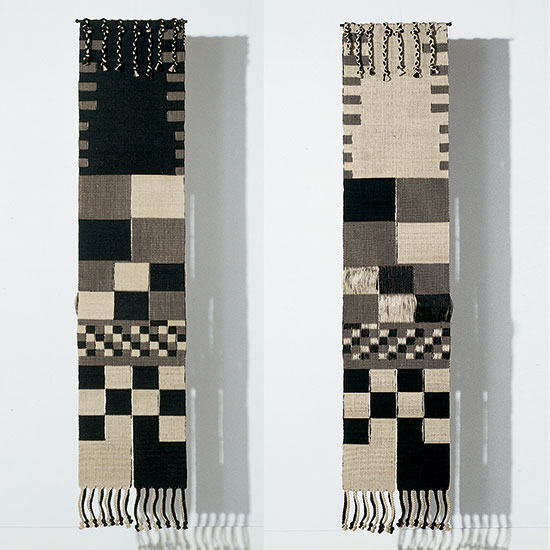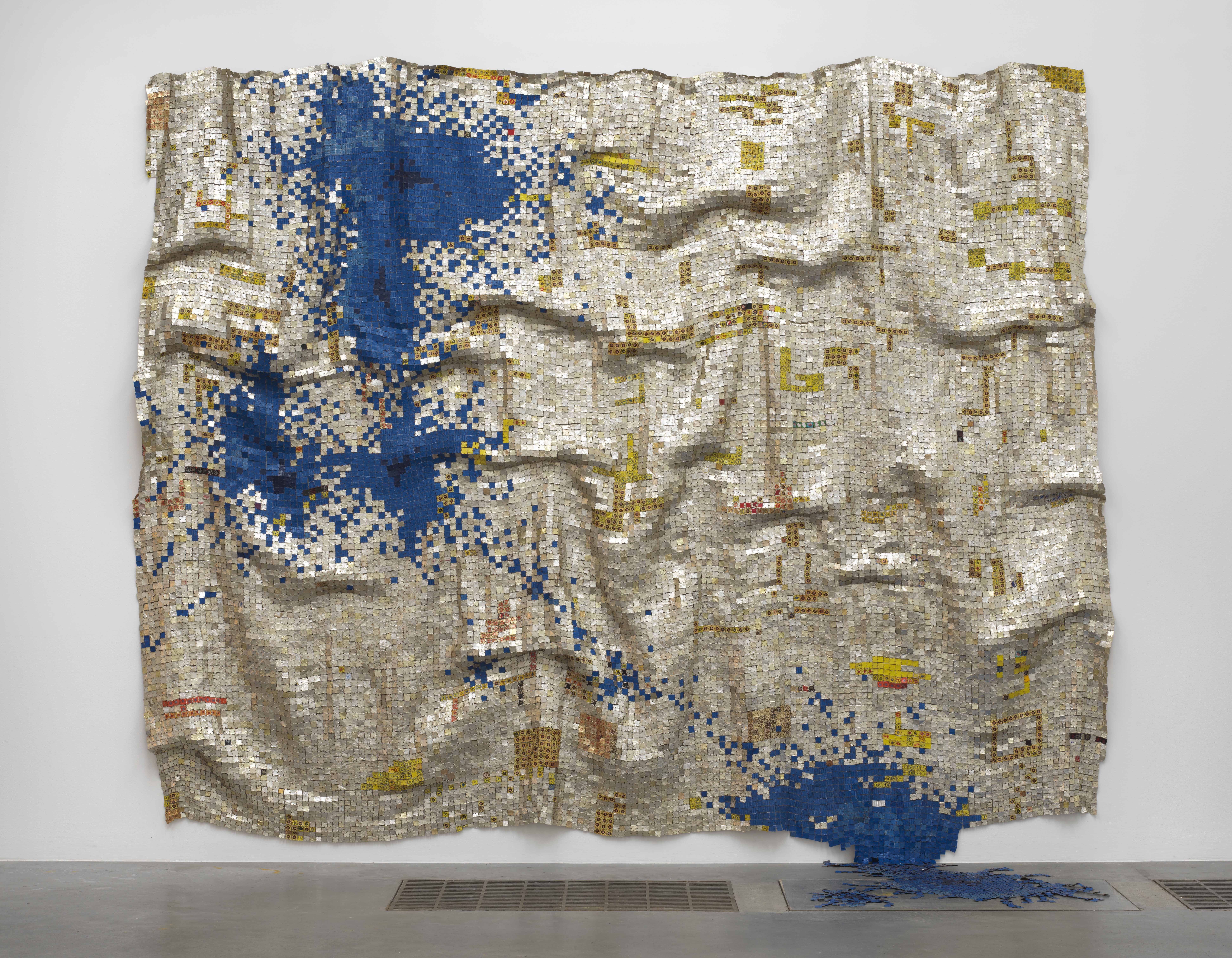These are exciting days at the Tate Modern in London for fans of art textiles. You’ll find fiber works by important artists in several different galleries.
Beyond Craft, in the Boiler House, curated by Ann Coxon features three pioneers, Lenore Tawney, Olga de Amaral and Sheila Hicks, who experimented with different weaving techniques, often looking to historical or indigenous textiles for inspiration. De Amaral and Hicks were particularly inspired by the technical brilliance of Peruvian weavings made before European colonization. The Museum notes that many artists in the 1960s were using weaving and knotting to create innovative hangings and sculptures, integrating traditional craft techniques into fine art practice. “The 1960s saw several high-profile exhibitions of ‘fiber art’: textile techniques used to create unique art objects without a practical function. These three artists were among those who attempted to collapse the hierarchy that sets fine art above craft. While this distinction has not entirely disappeared, in recent years fiber art has become a source of inspiration for a new generation of artists and curators and the artists displayed here are receiving fresh consideration.”

Lenore, like many artist of the 1960s, was drew inspiration for her weaving from indigenous Peruvian weavings. Photo credit: Tom Grotta
In Magdalena Abakanowicz, also in the Boilerhouse, viewers can explore Abakanowicz’s stitched cloth sculptures inspired by biological systems, organic matter, and regeneration. “Made at a time of political tension between the Soviet Union and Poland, Abakanowicz has said the work ‘could be understood as a cry from behind the Iron Curtain’,” says the Museum notes. (That was the time frame in which Anne and Jacques Baruch brought Abakanowicz’ work to the US, the subject of browngrotta arts’ catalog, Advocates for Art: Polish and Czech Fiber Artists from the Anne and Jacques Baruch Collection.)

Photo: Tate Photography
Elsewhere in the Boilerhouse is a work by El Anatsui, who completely transforms the most pedestrian materials into art. By flattening bottle tops and stitching them together into a shimmering metal cloth, he turns familiar disposable objects into something that appears precious and alters them in the viewers’ eyes. Taking a similar approach to the mundane, Sheela Gowda from India has created a room-sized installation made of car bumpers and handwoven human hair, an observation on “the coexistence of ritual and superstition alongside modern urban and economic transformation.”
Want to know more? Visit the Museum’s website to see images and to read New Yarn, Tate, etc. Essay: Textiles and Art by Kirsty Bell: http://www.tate.org.uk/context-comment/articles/new-yarns


